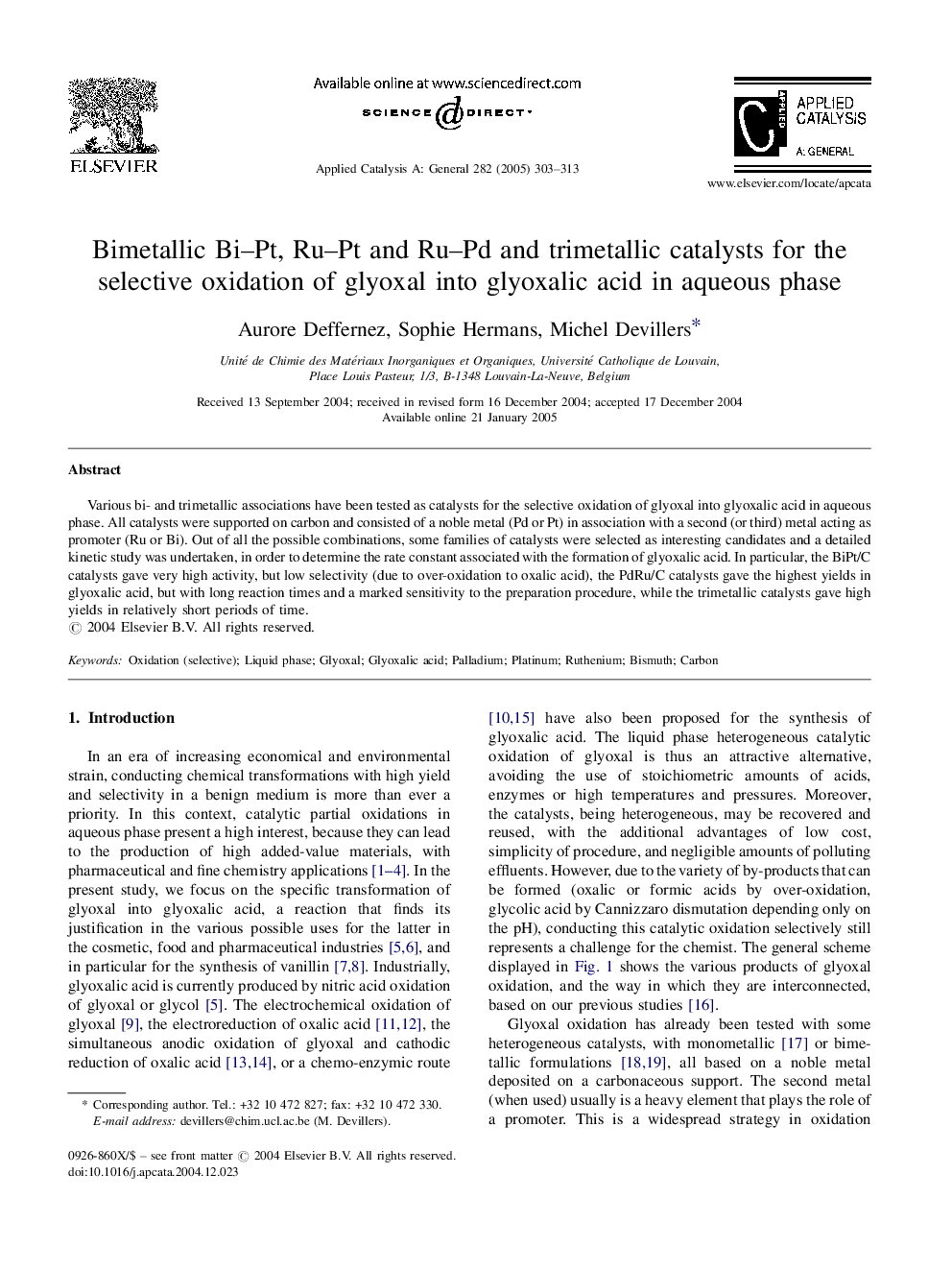| Article ID | Journal | Published Year | Pages | File Type |
|---|---|---|---|---|
| 9608066 | Applied Catalysis A: General | 2005 | 11 Pages |
Abstract
Various bi- and trimetallic associations have been tested as catalysts for the selective oxidation of glyoxal into glyoxalic acid in aqueous phase. All catalysts were supported on carbon and consisted of a noble metal (Pd or Pt) in association with a second (or third) metal acting as promoter (Ru or Bi). Out of all the possible combinations, some families of catalysts were selected as interesting candidates and a detailed kinetic study was undertaken, in order to determine the rate constant associated with the formation of glyoxalic acid. In particular, the BiPt/C catalysts gave very high activity, but low selectivity (due to over-oxidation to oxalic acid), the PdRu/C catalysts gave the highest yields in glyoxalic acid, but with long reaction times and a marked sensitivity to the preparation procedure, while the trimetallic catalysts gave high yields in relatively short periods of time.
Related Topics
Physical Sciences and Engineering
Chemical Engineering
Catalysis
Authors
Aurore Deffernez, Sophie Hermans, Michel Devillers,
